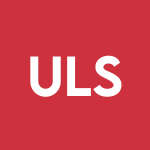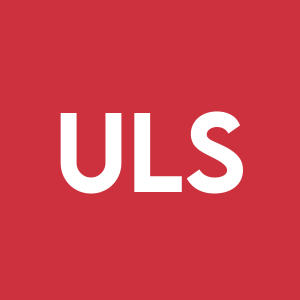Welcome to our dedicated page for UL Solutions SEC filings (Ticker: ULS), a comprehensive resource for investors and traders seeking official regulatory documents including 10-K annual reports, 10-Q quarterly earnings, 8-K material events, and insider trading forms.
Decoding UL Solutions’ filings can feel like running a safety test on a 300-page document. The company’s 10-K weaves together industrial and consumer TIC revenue, software subscription growth, and laboratory capital expenses—dense topics that hide crucial red-flags and opportunities. If finding the exact number of global testing facilities or pinpointing warranty liability details slows you down, you’re not alone.
Stock Titan turns those hurdles into a three-click process. Our AI models translate every UL Solutions annual report 10-K simplified, flag changes in segment margins inside each UL Solutions quarterly earnings report 10-Q filing, and push UL Solutions Form 4 insider transactions real-time to your dashboard. Need the short version? We generate plain-English summaries so you can focus on decisions, not page counts. All documents flow in from EDGAR the moment they post, ensuring nothing is missed—even the midnight UL Solutions 8-K material events explained.
- Track UL Solutions insider trading Form 4 transactions for patterns in executive stock movements.
- Dive into UL Solutions proxy statement executive compensation to compare pay against safety-performance metrics.
- Review every amendment, from the latest S-8 to an 11-K, with understanding UL Solutions SEC documents with AI.
Whether you’re dissecting revenue from calibration software or monitoring accreditation-related risk disclosures, our platform delivers the UL Solutions earnings report filing analysis professionals need. Real-time alerts, AI-powered summaries, and expert notes mean you spend less time searching and more time acting on reliable intelligence.
UL Solutions Inc. director reported a major stock conversion and sale involving the company’s dual-class shares. On 12/19/2025, the insider converted 1,875,000 shares of Class B Common Stock into 1,875,000 shares of Class A Common Stock and then sold 1,875,000 Class A shares at $78 per share, leaving no Class A shares directly held after the transactions.
Following these moves, the reporting person continued to hold 123,755,000 derivative securities tied to Class B Common Stock. The Class B shares are convertible into Class A on a one-to-one basis and will automatically convert upon certain events, including transfers, a seven-year anniversary of the initial public offering, or when the holder’s Class B stake falls below a specified threshold.
UL Solutions Inc. director reported a routine equity compensation update. On 12/08/2025, the director acquired 4 dividend equivalent rights tied to existing restricted stock units, each representing a contingent right to receive one share of Class A Common Stock at an exercise price of $0.
These dividend equivalent rights accrued on restricted stock units already held and will vest proportionately with those units. The related restricted stock units are scheduled to vest on the earlier of May 20, 2026 or the date of the annual meeting following the grant date. After this transaction, the director beneficially owned 2,801 restricted stock units and associated dividend equivalent rights in total.
UL Solutions Inc. director reported a routine equity award update. On 12/08/2025, the reporting person acquired 4 dividend equivalent rights in the form of restricted stock units (RSUs) linked to the company’s Class A common stock at a price of $0 per unit. These rights arise from dividends paid on RSUs already held and each represents a contingent right to receive one share of Class A common stock.
Following this transaction, the director beneficially owns 2,801 RSUs, held directly. The dividend equivalent rights tied to these RSUs are scheduled to vest proportionately with the underlying RSUs, which will vest on the earlier of May 20, 2026 or the date of the annual meeting following the grant date.
UL Solutions Inc. reported a Form 4 filing showing a director receiving additional derivative equity awards tied to dividend equivalents on deferred restricted stock units. On December 8, 2025, the director acquired 8 and 4 dividend equivalent rights, each representing a contingent right to receive one share of UL Solutions Class A common stock at a price of $0 per unit. Following these transactions, the director beneficially owns 4,954 and 2,801 such derivative securities in two separate blocks, held directly.
The dividend equivalent rights accrue on deferred restricted stock units and vest proportionately with the underlying units. One block of deferred restricted stock units vested on May 1, 2025 and is expected to be settled in Class A shares at a date selected under the Non-Employee Director Deferred Compensation Plan or as otherwise provided by that plan. A second block will vest on the earlier of May 20, 2026 or the date of the annual meeting following the grant date, with settlement also expected in shares under the plan.
UL Solutions Inc. director reports accrual of dividend equivalent rights on deferred stock units. A Form 4 discloses that, on December 8, 2025, the reporting person acquired additional deferred restricted stock units tied to the company’s Class A common stock. These awards reflect 8 and 4 dividend equivalent rights, each representing a contingent right to receive one share of Class A common stock, at an exercise price of $0.
The dividend equivalent rights accrue on existing deferred restricted stock units and vest in step with those underlying units. One tranche vested on May 1, 2025, while another will vest on the earlier of May 20, 2026 or the next annual meeting following the grant date. After the reported transactions, the reporting person holds 4,954 and 2,801 deferred restricted stock units (including accrued dividend equivalents) in two separate awards, which are expected to be settled in shares under the company’s Non-Employee Director Deferred Compensation Plan.
UL Solutions Inc. reported an insider equity update on a Form 4 filing. A company director received 4 additional dividend equivalent rights tied to restricted stock units on 12/08/2025, each representing a contingent right to one share of Class A common stock at a price of $0. These rights accrue on existing restricted stock units and will vest proportionately with them.
The related restricted stock units are scheduled to vest on the earlier of May 20, 2026 or the date of the annual meeting following the grant date. After this transaction, the reporting person beneficially owns 2,801 derivative securities, consisting of restricted stock units and accrued dividend equivalent rights, held in direct ownership.
UL Solutions Inc. director reports automatic stock-based accruals tied to deferred compensation. On December 8, 2025, the reporting person received 8 dividend equivalent rights and 4 dividend equivalent rights on existing deferred restricted stock units, both with an exercise price of $0.
Each dividend equivalent right represents a contingent right to receive one share of UL Solutions Class A common stock and accrues when dividends are paid on the stock. These rights vest proportionately with the underlying deferred restricted stock units, which either vested on May 1, 2025 or will vest on the earlier of May 20, 2026 or the next annual meeting, and are expected to be settled in shares under the company’s Non-Employee Director Deferred Compensation Plan.
UL Solutions Inc. reported an update to a director’s deferred equity holdings based on dividend accruals. On 12/08/2025, the director received 8 dividend equivalent rights tied to deferred restricted stock units, each representing a contingent right to one share of Class A common stock. The director also received 4 additional dividend equivalent rights linked to another deferred restricted stock unit award, all at a price of $0.
The dividend equivalent rights tied to units that vested on May 1, 2025 are expected to be settled in Class A common shares on a date the director selects under the company’s Non-Employee Director Deferred Compensation Plan, or as otherwise provided by the plan. The remaining rights will vest on the earlier of May 20, 2026 or the next annual meeting following the grant date, and are also expected to be settled in shares under the same plan. After these transactions, the director beneficially owns 4,954 and 2,801 derivative securities in the respective deferred unit accounts.
UL Solutions Inc. director reports dividend-equivalent awards on deferred stock units. A company director filed a Form 4 showing automatic accrual of dividend equivalent rights on existing deferred restricted stock units, tied to UL Solutions Class A common stock.
On December 8, 2025, the director received 8 dividend equivalent rights linked to deferred restricted stock units that vested on May 1, 2025, and 4 dividend equivalent rights linked to a separate deferred restricted stock unit grant that will vest on the earlier of May 20, 2026 or the next annual meeting after the grant date. Each right represents a contingent claim to one share of Class A common stock, at a price of $0, under the company’s Non-Employee Director Deferred Compensation Plan.
UL Solutions Inc. reported insider equity activity by its Executive VP & CFO, Ryan Robinson. On December 8, 2025, he acquired dividend equivalent rights in the form of restricted stock units (RSUs) that track the company’s Class A common stock at an exercise price of $0. One grant added 16 RSUs, bringing the related holding to 9,718 RSUs, while another added 15 RSUs, bringing that holding to 9,267 RSUs.
Each dividend equivalent right represents a contingent right to receive one share of Class A common stock and accrues on existing RSUs. These dividend equivalents vest on the same schedule as the underlying RSUs, in three equal installments on the first, second, and third anniversaries of May 1, 2024 and April 1, 2025, respectively.


